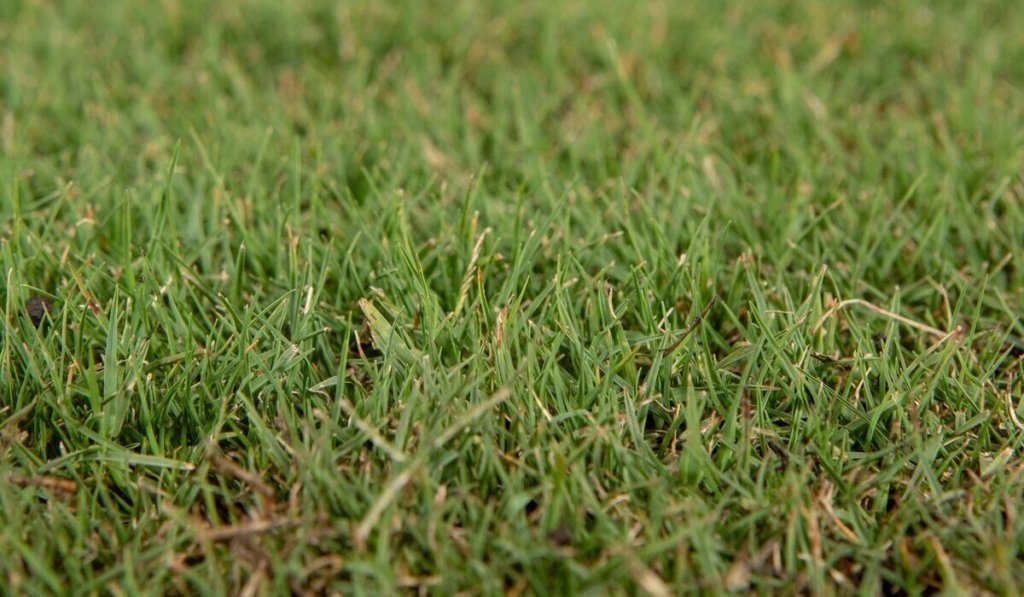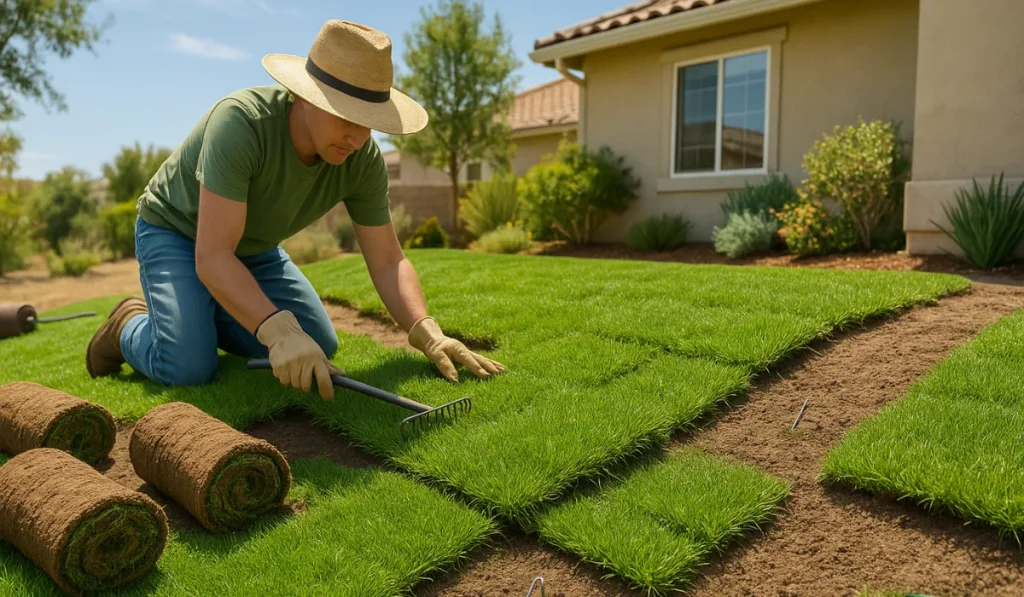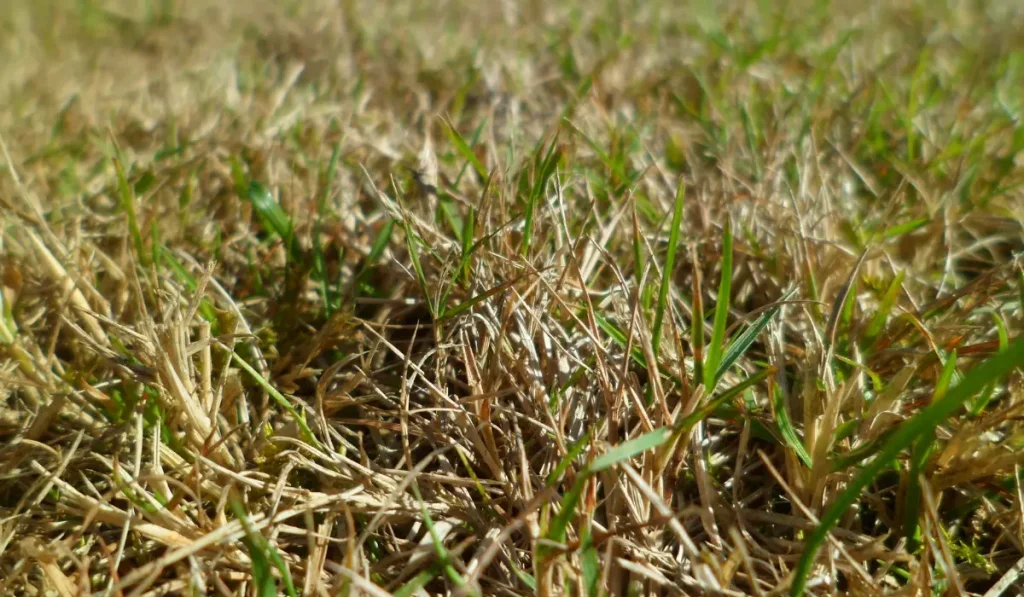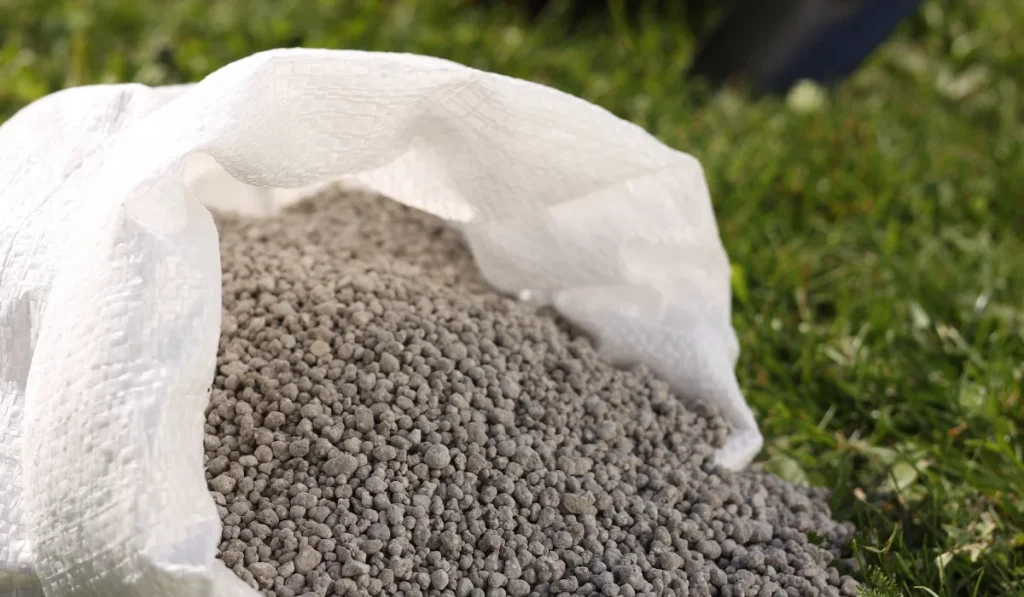If you’re thinking about installing a new lawn, you may have come across the term “Tifway 419 sod.”
In this blog post, we’ll take a closer look at this popular type of sod and discuss some of the pros and cons.
Key Takeaways
- Tifway 419 sod is a hybrid Bermuda grass type that is often used for high-traffic areas.
- This grass is a good option if you’re looking for something that holds up to drought and heat well without losing its color.
- Regular maintenance tips – like mowing, watering, and fertilizing – do still apply when caring for this type of sod.
What Is Tifway 419 Sod?
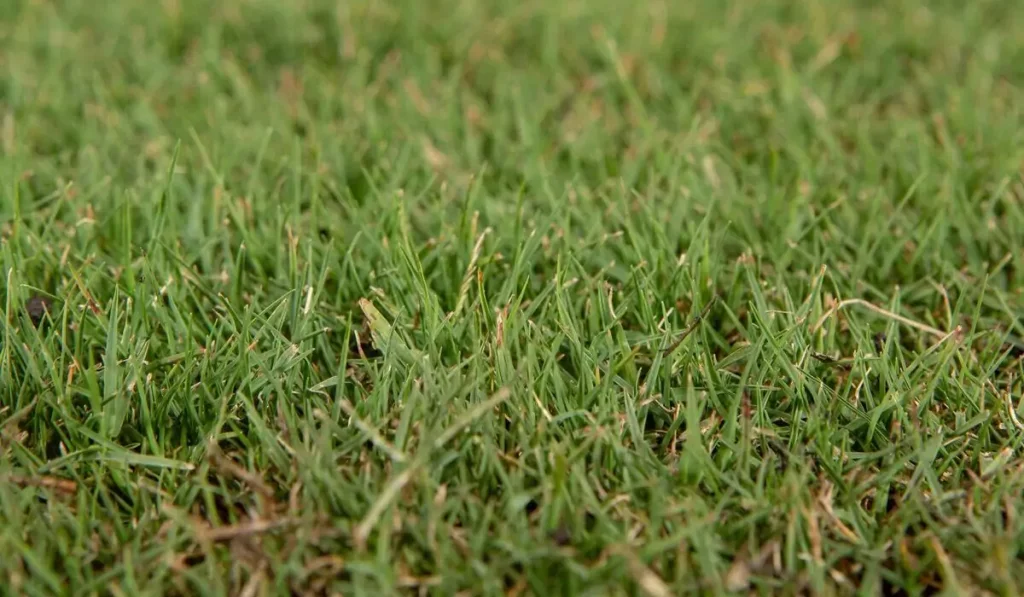
Tifway 419 sod is a type of Bermuda grass that is often used for golf courses and other sports fields. Tifway 419 has a very fine texture and a deep root system, which makes it ideal for high-traffic areas.
The sod is also very tolerant of drought and heat, making it a good choice for warm climates. In addition to its durability, Tifway 419 sod is relatively low-maintenance. During wintertime, when the sod is dormant, it only requires occasional mowing and fertilization.
During the growing season, however, mowing should be weekly, at a height of ½-¾ of an inch.
For these reasons, Tifway 419 sod is one of the most popular choices for professional turf grasses.
Color
Tifway 419 is a common type of Bermuda grass that is often used for lawns, golf courses, and other turf areas. It’s known for its dark green color, thick growth habit, and high level of wear tolerance.
Bermuda grass is a warm-season grass, which means it goes dormant during the winter months. In northern climates, this can result in a brown lawn during the winter.
Drought Tolerance
One of the biggest advantages of Tifway 419 is that it has excellent drought tolerance. Once it’s established, it can withstand long periods without water and still stay green.
Disease Tolerance
Tifway 419 is a Bermuda grass that is known for its disease tolerance.
It is resistant to many common diseases, such as brown patch and Pythium root rot. In addition, Tifway 419 has a deep root system that helps to prevent soil erosion.
Shade Tolerance
Tifway 419 is also relatively shade tolerant, making it a good choice for areas that do not receive full sun. However, it grows best in full sun conditions, something to keep in mind if you want your lawn to look as gorgeous as possible.
Heat Tolerance
Tifway 419 is a type of Bermuda grass that is known for its heat tolerance. It is a popular choice for use in lawns, golf courses, and parks in warm climates.
The grass is also relatively resistant to disease and pests. Tifway 419 can be difficult to establish from seed, so it is typically grown from sod or sprigs.
Once established, it forms a dense, green lawn. Although it does require regular mowing and watering, Tifway 419 is a low-maintenance grass that can thrive in hot, dry conditions.
Winter Color
Tifway 419 sod is not known for its ability to maintain its color throughout the winter months. It goes dormant, turning brown as it goes to sleep in the cold.
Because of this, many people choose to overseed the Bermuda with ryegrass, helping to keep the area green during colder months. This combination provides more use from the grass and helps it hold up to all conditions.
In addition, this sod is also very disease-resistant, making it a low-maintenance option for busy homeowners.
Recovery from Moderate Wear
Tifway 419 sod is a popular choice for golf courses and other high-traffic areas because of its ability to recover from moderate wear.
The grass has a deep root system that helps it weather periods of drought and heat stress, and the thick blades resist wear and tear from heavy foot traffic.
Pros of Choosing Tifway 419 Sod
When it comes to choosing the best type of sod for your lawn, there are a lot of factors to consider. Seed type, climate, traffic, and more all come into play when you’re making your decision.
However, one type of sod that has consistently shown itself to be a top choice for homeowners and businesses alike is Tifway 419 sod. Here are just a few reasons why.
Better Density
One of the most important things to look for in a sod is density. A more dense sod will have a deeper root system, which means it will be better able to withstand wear and tear.
It will also be less likely to develop brown patches, which can be unsightly and difficult to repair. Tifway 419 sod has a very dense root system, making it a great choice for high-traffic areas.
Faster Wear Recovery
Tifway 419 sod also features a very dense thatch layer. This layer is primarily composed of dead grass leaves, stem nodes, and roots.
This layer helps protect the live grass blades from wear and tear. It also helps the grass recover more quickly from any damage that does occur.
In fact, the bermuda grass found in Tifway helps this type of grass recover quite well from wear and tear, especially compared to other grasses, like fescue.
So if you have kids or pets that love to run and play on your lawn, Tifway 419 sod may be a good option for you.
Cons of Choosing Tifway 419 Sod
However, there are some downsides to Tifway 419. One is that it has a very high seed head production; this can make your lawn look unsightly if it isn’t mowed frequently.
It’s also not the best choice for shady areas; it needs at least six hours of direct sunlight per day to really thrive. That said, it can be grown in areas that receive partial shade—it just won’t reach its fullest potential.
A final disadvantage is that bermuda goes dormant in the winter. Although it is aggressive and repairs damage easily (hence its great wear tolerance, as described above), this aggressive nature means it also spreads with its climbing stolons easily into planter beds and other areas.
You may have to be more heavy handed with the weed eater!
Maintenance Tips for Tifway 419 Sod
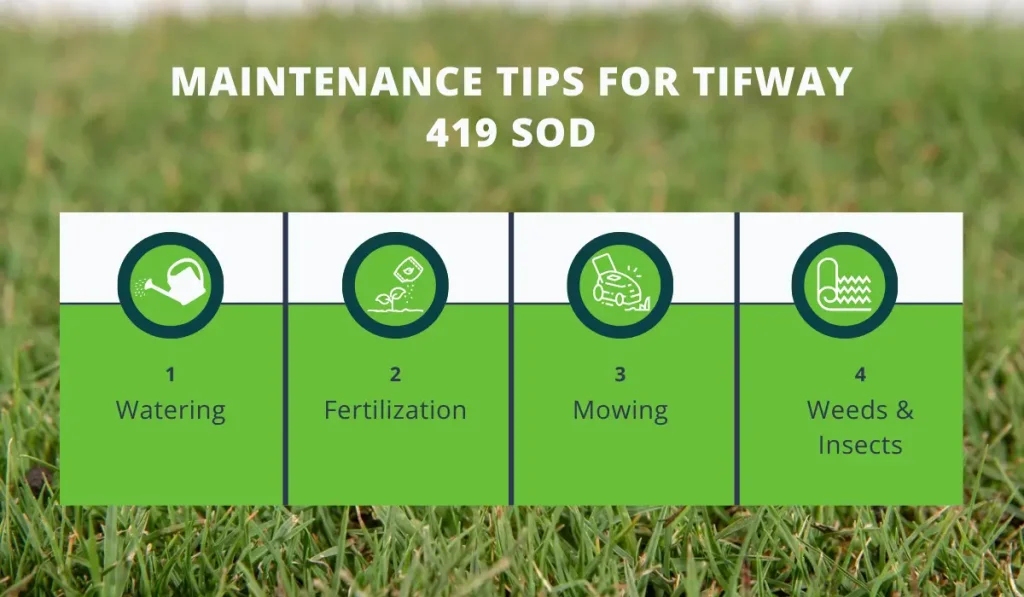
Taking care of your Tifway 419 grass sod is important to keeping it looking its best. Below, we’ll cover some of the most important maintenance tips for Tifway 419 sod, including watering, fertilization, mowing, and dealing with weeds and insects.
Watering
Tifway 419 sod should be watered deeply and infrequently to encourage deep root growth. The best time to water is in the early morning hours, before the heat of the day sets in.
How often you need to water will depend on factors such as rainfall, temperature, and humidity. A good rule of thumb is to water when the grass begins to turn a darker green, which indicates that it is under stress from lack of water.
Fertilization
Tifway 419 grass sod benefits from regular fertilization. The best time to fertilize is in the spring and fall when the grass is actively growing.
Be sure to use a fertilizer that is specifically designed for Tifway 419 sod. When applying fertilizer, use a spreader to ensure even coverage and avoid harmful burn spots.
Mowing
To keep your Tifway 419 grass looking its best, it’s important to mow at the proper height. The recommended mowing height for Tifway 419 is ½ to ¾ of an inch.
Mowing any lower than this can damage the grass and make it more susceptible to disease and pests. Always use a reel mower when mowing to avoid tearing the grass blades.
Be sure to mow in different directions each time to prevent ruts from forming in your lawn.
Weeds & Insects
Weeds and insects can be a problem for any type of grass, including Tifway 419. To deal with weeds, be sure to pull them by hand as soon as you see them rather than waiting until they have a chance to produce seeds.
For insect problems, consult with your local extension office or garden center for recommendations on products that are safe for use on Tifway 419 grass sod.
The Bottom Line
Overall, Tifway 419 is a good choice for lawns in warm climates with well-drained soil. It’s relatively low maintenance and has good drought tolerance. However, it’s not the best choice for shady areas or cold winters.
So, if you’re thinking about installing Tifway 419 sod on your property, be sure to take all of these factors into consideration first.
People Are Also Asking:
What time of year is best to lay sod?
Spring and fall are typically the best times of year to lay sod. The soil is cooler and there is often more moisture, which helps the sod to establish roots.
The temperature is also not too hot, which can stress the new sod. However, it is important to avoid laying sod when the ground is frozen, as this can prevent proper root growth.
In general, it is best to wait until the threat of frost has passed before laying sod. For many areas of the country, this means early spring or late fall. However, in some regions, it may be possible to lay sod throughout the entire growing season.
What is the best grass for Southern California?
Ultimately, the best grass for Southern California will depend on your specific needs. If you’re looking for a low-maintenance option that can withstand long periods of sun and heat, Bermuda or zoysia grass may be the best choice. For a more drought-tolerant lawn, consider planting Tifway, fescue, or buffalo grass.
